Les bandes de carbure sont des composants essentiels dans diverses industries, offrant une durabilité et une précision inégalées. Ce guide présente tout ce qu'il faut savoir sur les éléments suivants fournisseurs de bandes en carbureLes matériaux de construction sont des éléments essentiels de la vie quotidienne, qu'il s'agisse des types et des applications, des propriétés des matériaux ou de la manière de choisir le bon fournisseur. Plongeons dans l'aventure !
Aperçu des bandes de carbure
Les bandes de carbure sont utilisées dans diverses applications en raison de leur dureté et de leur résistance à l'usure. Elles sont fabriquées à partir d'un matériau composite appelé carbure cémenté, qui associe des particules de carbure de tungstène à un liant métallique. Elles sont donc idéales pour les outils de coupe, les pièces d'usure et les machines industrielles.
Détails clés :
- Composition : Ils sont généralement fabriqués à partir de carbure de tungstène et de cobalt.
- Applications : Outils de coupe, pièces d'usure, machines industrielles, etc.
- Propriétés : Dureté élevée, excellente résistance à l'usure et bonne ténacité.
Types de bandes de carbure
Il existe différents types de bandes de carbure, chacun convenant à des applications spécifiques. Voici un tableau complet des différents types de bandes de carbure :
| Type | Description | Applications courantes |
|---|---|---|
| Bandes de carbure de tungstène | Dureté et résistance à l'usure élevées, utilisées dans des environnements soumis à de fortes contraintes. | Outils de coupe, équipement minier |
| Carbure lié au cobalt | Ténacité et durabilité accrues, idéal pour les applications résistantes aux chocs. | Formage des métaux, outils de forage |
| Bandes de carbure de titane | Stabilité à haute température, convient aux conditions extrêmes. | Aérospatiale, composants automobiles |
| Bandes de carbure de vanadium | Excellente résistance à l'abrasion, utilisée dans les applications à forte usure. | Machines industrielles, outils de coupe |
| Bandes de carbure de chrome | Résistance supérieure à la corrosion, idéale pour les environnements difficiles. | Traitement chimique, pétrole et gaz |
| Bandes de carbure de niobium | Haute résistance et conductivité thermique, utilisée dans des applications spécialisées. | Composants électroniques, aérospatiale |
| Bandes de carbure de silicium | Dureté et stabilité thermique exceptionnelles, adaptées aux applications à haute température. | Fabrication de semi-conducteurs, céramiques |
| Bandes de carbure de tantale | Excellente dureté et résistance chimique, utilisé dans des applications de haute performance. | Réacteurs nucléaires, aérospatiale |
| Bandes de carbure de molybdène | Bonne stabilité thermique et résistance, utilisé dans des applications industrielles spécifiques. | Pétrochimie, transformation des métaux |
| Bandes de carbure d'hafnium | Point de fusion et résistance élevés, adaptés aux conditions de température extrêmes. | Vaisseaux spatiaux, fours à haute température |
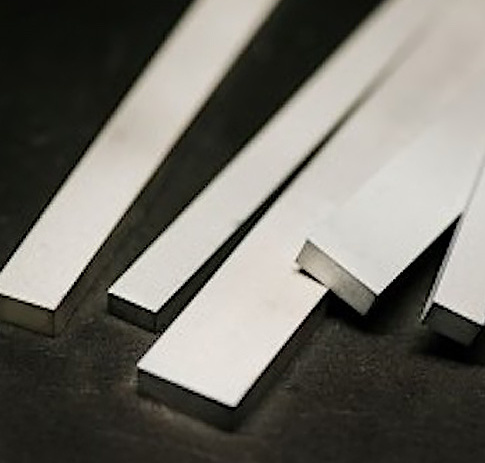
Applications des bandes de carbure
Les bandes de carbure sont polyvalentes et utilisées dans un grand nombre d'industries. Voici un tableau détaillant leurs applications courantes :
| Application | L'industrie | Avantages |
|---|---|---|
| Outils de coupe | Fabrication | Haute précision, durabilité et longue durée de vie de l'outil |
| Pièces d'usure | Exploitation minière | Résistance à l'abrasion et à l'usure |
| Machines industrielles | Ingénierie générale | Amélioration des performances et de la longévité des machines |
| Formage des métaux | Travail des métaux | Amélioration de la résistance de l'outil et de la résistance à l'usure |
| Composants aérospatiaux | Aérospatiale | Stabilité et résistance à haute température |
| Traitement chimique | Industrie chimique | Résistance à la corrosion et durabilité |
| Équipements pétroliers et gaziers | Pétrole et gaz | Résistance aux environnements difficiles et à l'usure |
| Fabrication de semi-conducteurs | Électronique | Stabilité thermique et précision élevées |
| Composants automobiles | Automobile | Durabilité et performance accrues |
| Réacteurs nucléaires | Énergie nucléaire | Haute résistance mécanique et chimique |
Propriétés des matériaux des bandes de carbure
Il est essentiel de comprendre les propriétés des matériaux des bandes de carbure pour choisir le bon type de bande pour votre application. Voici un tableau résumant les principales propriétés :
| Propriété | Description |
|---|---|
| Dureté | Mesure la résistance de la bande à la déformation et à l'usure. |
| Solidité | Indique la capacité du matériau à absorber l'énergie et à résister à la fissuration. |
| Résistance à l'usure | Décrit la capacité de la bande à résister aux forces abrasives et à maintenir ses performances dans le temps. |
| Stabilité thermique | Capacité à maintenir les performances à des températures élevées. |
| Résistance à la corrosion | Décrit la résistance du matériau à la dégradation chimique et environnementale. |
| La force | Mesure la capacité de la bande à résister aux forces mécaniques. |
| Densité | Indique la masse par unité de volume du matériau. |
| Conductivité thermique | Décrit la capacité du matériau à conduire la chaleur. |
Composition, propriétés et caractéristiques des bandes de carbure
Les différentes bandes de carbure ont des compositions et des propriétés uniques. Voici un tableau détaillé :
| Type | Composition | Dureté | Solidité | Résistance à l'usure | Stabilité thermique | Résistance à la corrosion |
|---|---|---|---|---|---|---|
| Carbure de tungstène | WC + Co | Très élevé | Haut | Excellent | Bon | Modéré |
| Carbure lié au cobalt | WC + Co | Haut | Très élevé | Bon | Modéré | Faible |
| Carbure de titane | TiC | Haut | Modéré | Bon | Excellent | Modéré |
| Carbure de vanadium | VC | Haut | Modéré | Excellent | Bon | Faible |
| Carbure de chrome | Cr3C2 | Modéré | Haut | Bon | Modéré | Excellent |
| Carbure de niobium | NbC | Haut | Modéré | Bon | Bon | Modéré |
| Carbure de silicium | SiC | Très élevé | Faible | Excellent | Excellent | Modéré |
| Carbure de tantale | TaC | Très élevé | Modéré | Excellent | Bon | Haut |
| Carbure de molybdène | Mo2C | Haut | Haut | Bon | Modéré | Modéré |
| Carbure de hafnium | HfC | Très élevé | Haut | Excellent | Excellent | Haut |

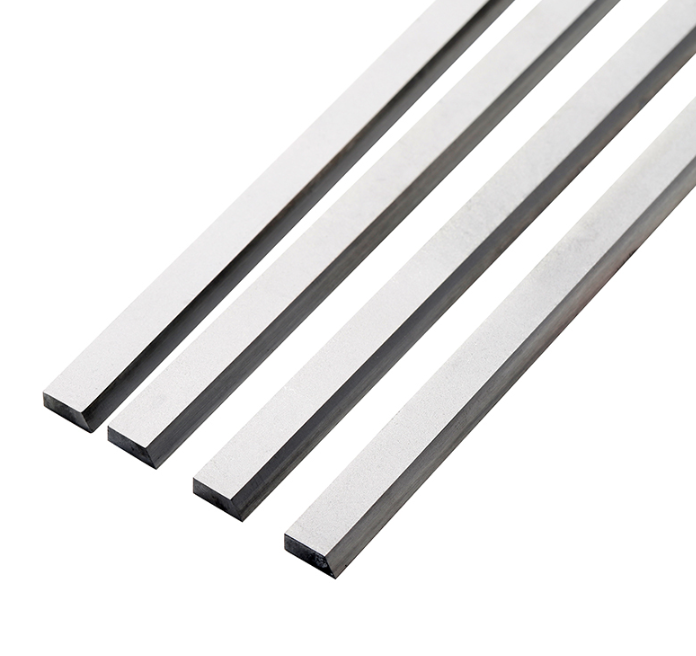
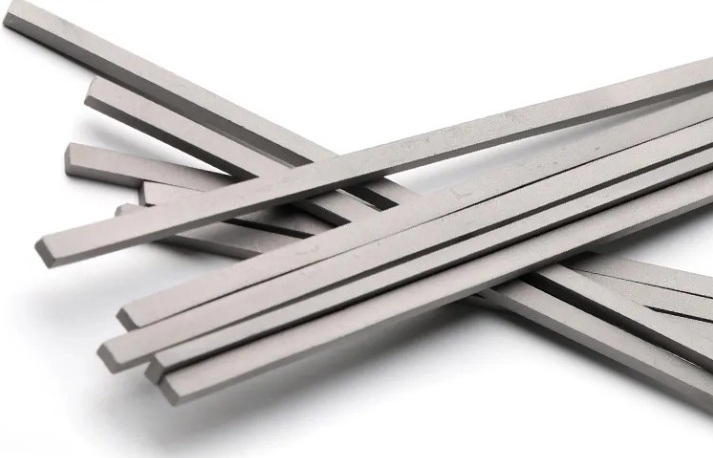

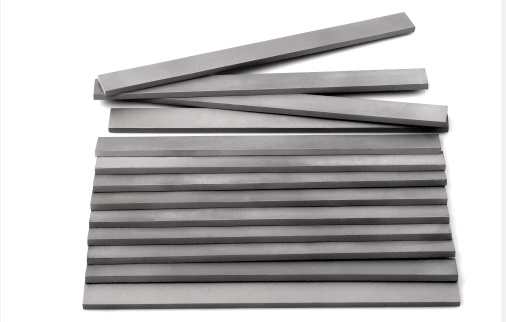
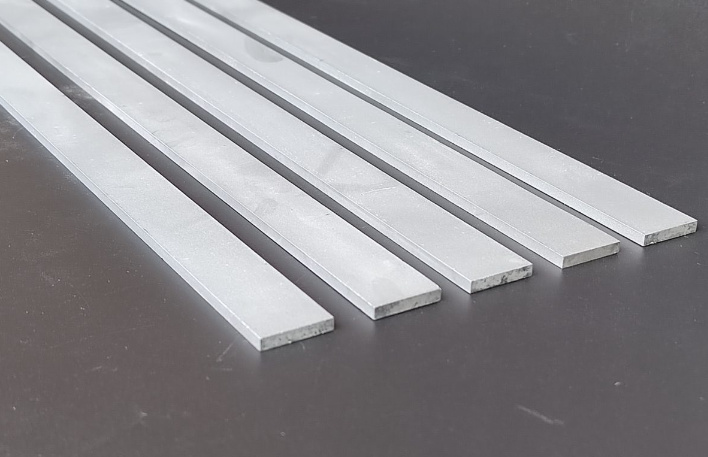
Dureté, solidité et résistance à l'usure
Lors du choix des bandes de carbure, il est essentiel de tenir compte de leur dureté, de leur solidité et de leur résistance à l'usure. Voici un tableau comparatif :
| Type | Dureté | La force | Résistance à l'usure |
|---|---|---|---|
| Carbure de tungstène | 1500-2200 HV | Haut | Excellent |
| Carbure lié au cobalt | 1300-1600 HV | Très élevé | Bon |
| Carbure de titane | 1800-2100 HV | Modéré | Bon |
| Carbure de vanadium | 2200-2500 HV | Modéré | Excellent |
| Carbure de chrome | 1600-1800 HV | Haut | Bon |
| Carbure de niobium | 1600-1900 HV | Modéré | Bon |
| Carbure de silicium | 2400-2800 HV | Faible | Excellent |
| Carbure de tantale | 1600-1800 HV | Modéré | Excellent |
| Carbure de molybdène | 1800-2200 HV | Haut | Bon |
| Carbure de hafnium | 2000-2400 HV | Haut | Excellent |
Spécifications, tailles, formes et normes
Les bandes de carbure sont disponibles dans différentes spécifications, tailles, formes et normes. Voici un tableau détaillé :
| Spécifications | Taille (mm) | Forme | Normes |
|---|---|---|---|
| Tolérance | ±0.05 - ±0.1 | Rectangulaire, Carré | ISO 9001, ASTM, DIN |
| Longueur | 50 – 200 | Plat, sur mesure | ISO 9001, ASTM, DIN |
| Largeur | 3 – 50 | Plat, sur mesure | ISO 9001, ASTM, DIN |
| Épaisseur | 1 – 20 | Plat, sur mesure | ISO 9001, ASTM, DIN |
| Formes personnalisées | Disponible | Sur mesure | ISO 9001, ASTM, DIN |
Fournisseurs et détails des prix
Lorsque vous choisissez un fournisseur de bandes de carbure, tenez compte de sa réputation, de la qualité de ses produits et de ses prix. Voici une comparaison des fournisseurs les plus courants et de leurs tarifs :
| Fournisseur | Localisation | Gamme de produits | Prix (USD) | Avis des clients |
|---|---|---|---|---|
| Fournisseur A | ÉTATS-UNIS | Tungstène, Cobalt | $50 - $100/kg | 4.5/5 |
| Fournisseur B | Allemagne | Titane, Vanadium | $60 - $120/kg | 4.7/5 |
| Fournisseur C | Chine | Chrome, Niobium | $40 - $90/kg | 4.3/5 |
| Fournisseur D | Japon | Silicium, Tantale | $70 - $130/kg | 4.6/5 |
| Fournisseur E | Inde | Molybdène, Hafnium | $50 - $110/kg | 4.4/5 |
Comment choisir les bandes de carbure adéquates ?
Pour choisir les bonnes bandes de carbure, il faut tenir compte de divers facteurs tels que l'application, les propriétés du matériau et la réputation du fournisseur. Voici un tableau qui vous aidera à prendre une décision éclairée :
| Facteur | Considérations |
|---|---|
| Application | Déterminer le cas d'utilisation spécifique pour sélectionner le type de bande de carbure approprié. |
| Propriétés des matériaux | Évaluer la dureté, la ténacité, la résistance à l'usure et d'autres propriétés en fonction des besoins de l'application. |
| Réputation du fournisseur | Vérifiez les avis des clients, la réputation du secteur et la qualité des produits des fournisseurs potentiels. |
| Budget | Comparez les prix de différents fournisseurs pour trouver le meilleur rapport qualité-prix. |
| Normes et conformité | Veiller à ce que le produit réponde aux normes et aux spécifications de l'industrie. |
Comparaison des avantages et des limites
Les différents types de bandes de carbure présentent des avantages et des limites uniques. Voici un tableau comparatif :
| Type | Avantages | Limites |
|---|---|---|
| Carbure de tungstène | Dureté élevée, excellente résistance à l'usure | Ténacité modérée |
| Carbure lié au cobalt | Ténacité élevée, bonne durabilité | Dureté inférieure à celle des autres types |
| Carbure de titane | Stabilité à haute température, bonne résistance à l'usure | Ténacité modérée |
| Carbure de vanadium | Excellente résistance à l'usure, grande dureté | Ténacité modérée |
| Carbure de chrome | Résistance supérieure à la corrosion, bonne résistance à l'usure | Dureté modérée |
| Carbure de niobium | Haute résistance, bonne résistance à l'usure | Résistance modérée à la corrosion |
| Carbure de silicium | Dureté exceptionnelle, excellente stabilité thermique | Faible ténacité |
| Carbure de tantale | Dureté élevée, excellente résistance à l'usure | Coût élevé |
| Carbure de molybdène | Bonne stabilité thermique, haute résistance | Résistance modérée à l'usure |
| Carbure de hafnium | Point de fusion élevé, excellente résistance à l'usure | Coût élevé |

FAQ
| Question | Réponse |
|---|---|
| À quoi servent les bandes de carbure ? | Les bandes de carbure sont utilisées dans les outils de coupe, les pièces d'usure, les machines industrielles et diverses autres applications en raison de leur dureté et de leur durabilité. |
| Comment choisir la bonne bande de carbure ? | Lors du choix d'une bande de carbure, il faut tenir compte de l'application spécifique, des propriétés du matériau, de la réputation du fournisseur et du budget. |
| Quels sont les principaux types de bandes de carbure ? | Les principaux types sont le carbure de tungstène, le carbure lié au cobalt, le carbure de titane, le carbure de vanadium, etc. |
| Pourquoi le carbure de tungstène est-il populaire ? | Le carbure de tungstène est apprécié pour sa grande dureté, son excellente résistance à l'usure et ses bonnes performances générales. |
| Quelles sont les industries qui utilisent les bandes de carbure ? | Les industries telles que la fabrication, l'exploitation minière, l'aérospatiale, l'automobile et le traitement chimique utilisent des bandes de carbure. |
| Les bandes de carbure peuvent-elles être personnalisées ? | Oui, de nombreux fournisseurs proposent des formes et des tailles personnalisées pour répondre aux exigences d'applications spécifiques. |
Conclusion
Il est essentiel de choisir le bon fournisseur de bandes de carbure pour garantir la qualité et les performances de vos outils et équipements. En comprenant les différents types, les applications, les propriétés des matériaux et les options des fournisseurs, vous pourrez prendre une décision éclairée qui répondra à vos besoins spécifiques. Que vous travailliez dans la fabrication, l'exploitation minière, l'aérospatiale ou toute autre industrie, les bandes de carbure offrent une durabilité et une précision inégalées pour améliorer vos opérations.
Pour obtenir les meilleurs résultats, il faut toujours tenir compte de l'application spécifique, évaluer les propriétés du matériau et choisir un fournisseur réputé pour s'assurer d'obtenir des bandes de carbure de la plus haute qualité.



